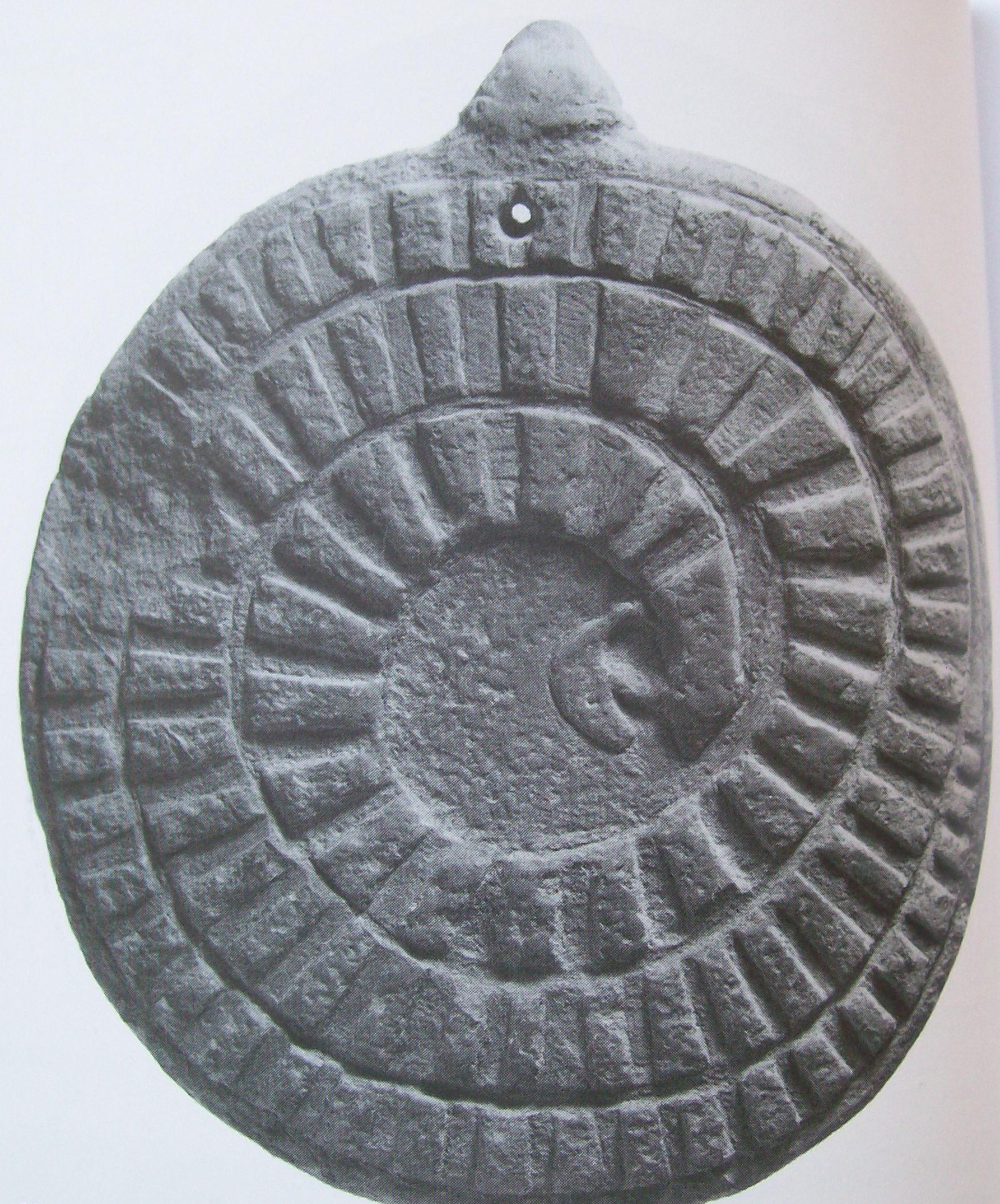One the first known spiral track and multi-player board games of ancient Egypt was a game called Mehen.

Mehen, meaning coiled one, was a name for both a god and board game in ancient Egypt. Researchers have been able to learn some about the god, Mehen, from Egyptian funerary texts. The large serpent god was believed to protect the sun-god Ra. During Ra’s night journey through the netherworld, Mehen would coil around him and fend off his enemies. The game, Mehen, possibly represents this journey with the depiction of a coiled snake as the board. Spaces, either carved or etched onto the back of the snake, provided players with a spiral track to move upon. It is believed the game held deep religious significance for players at the time.
Hieroglyphs for the god, Mehen, include the Mehen game board symbol in his name. This close association between game and god helps give understanding to how the game may have been played. As the Egyptian texts speak of the underground journey and returning again at dawn, it is believed the game is played and won by moving towards center and back out. Winning the game is seen as symbolizing a player’s attainment of life after death.
One of the best examples for the game was found in the tomb of Hesay-Ra. Hesay-Ra served under the Pharaoh Djoser as Chief of Physicians or Chief of Scribes in the third dynasty (approx. 2686BC-2613BC). The tomb was excavated in 1911 by Quibell and contained illustrations of three complete board games; Senet, Men, and Mehen. Senet (passing) was another popular board game of the time and is known to share a similar sacred meaning. Not much is known about the other game of Men (endurance), except it is suspected to be in association with Hounds and Jackals.
![547px-Egyptian_-_Lioness_Game_Piece_-_Walters_71623_-_Three_Quarter_Right[1]](https://allaboutfunandgames.com/wp-content/uploads/2012/07/547px-Egyptian_-_Lioness_Game_Piece_-_Walters_71623_-_Three_Quarter_Right1-150x150.jpg)
Images of four players playing the game are found depicted on tomb walls. Some of the scenes include inscriptions above the players stating phrases like, “I am playing Mehen against you” or “seizing Mehen.” In the accompanying image (below), the Mehen game board is found bottom center. It looks like a vase because the circular game boards included a trapezoidal shape or shape of a turtle’s head attached to it and does not show the serpentine path for the game.
It has been suggested the players of the image look away from the game because of its religious significance. This possible sacredness may provide a reason for the game of Mehen to have disappeared from record during the New Kingdom. In creating a board, one needed to ‘cut’ spaces for the game into the snake’s back. The action may have been seen as actually ‘killing’ the all important deity for survival through the Underworld and so it was no longer done. Mehen, the god, became only the protector of board games and was often seen associated with Senet from that time on.
No rules for playing, Mehen, have ever been discovered. However, a similar Arab game, known as the Hyena Game, shared remarkable characteristics for the board and pieces to Mehen. Because of this, the game play utilized in the Hyena game has been adapted to fit the game of Mehen.
Players each begin with six marbles and one lion. Throwsticks determine movement.
Players start at the tail, along the outer edge of the board, and move towards the center where the snake’s head rests. The players race to the center with their marble-like pieces. Once a marble reaches center, turns back out and reaches start again, the lion piece is put into play. This predatory piece is then used to capture (eat) an opponent’s marble pieces.
The throwing of 1 allows a player to move his marble piece initially onto the board. Any 1’s thrown after all pieces are placed on the board, are kept track of, for later use. Taking turns, each player rows and moves their pieces inward (or outward if returning). Upon exact roll, a player can reach center. Here, a player must roll two 1’s or have two 1’s stored up, to begin on the return path out.
Once a player has returned a marble to start, his lion begins; moving twice as fast. Upon reaching center, the lion must roll or have four 1’s stored in order to head back out. As the lion moves towards start, he captures any opponent’s marble pieces he meets. (If a player lands on the space of another lion, that lion returns to start).
The winner is the person whose lion first captures all of his opponent’s marbles.
Even though not much is written about the game, and only about 15 boards have ever been discovered, the game Mehen and the god, Mehen, were believed to be an important part of Egyptian life. The inclusion of inscriptions on tomb walls share the entertaining value and symbolic playing of the game. It’s interesting to realize games were important to life back then, just as they are today.
Suggested throwstick values for movement of marbles:
1 flat, 2 round=1
2 flat, 1 round=2
3 flat=4
3 round=6
For lions:
1 flat, 2 round=1
2 flat, 1 round=4
3 flat=8
3 round=12
Sources:
Finkel, Irving, Ancient Board Games in Perspective, British Museum Press, 2007
Rothohler, Benedikt, Mehen, God of the Boardgames, boardgame studies
Finkel, Irving, Ancient Board Games, 1996

![800px-Egyptian_-_Lintel_with_Musicians_and_Game_Players_-_Walters_22152-22153[1]](https://allaboutfunandgames.com/wp-content/uploads/2012/07/800px-Egyptian_-_Lintel_with_Musicians_and_Game_Players_-_Walters_22152-221531-300x97.jpg)
Pingback: MEHEN – The Game Of Ancient Egypt | Site Title
Pingback: AAA Day in the LIfE of the 137 SS Mystic – August 15, 2013 – M and N | Alternative Thinking 37
Pingback: AAA Day in the LIfE of the 137 SS MyStic – think pink! | Alternative Thinking 37